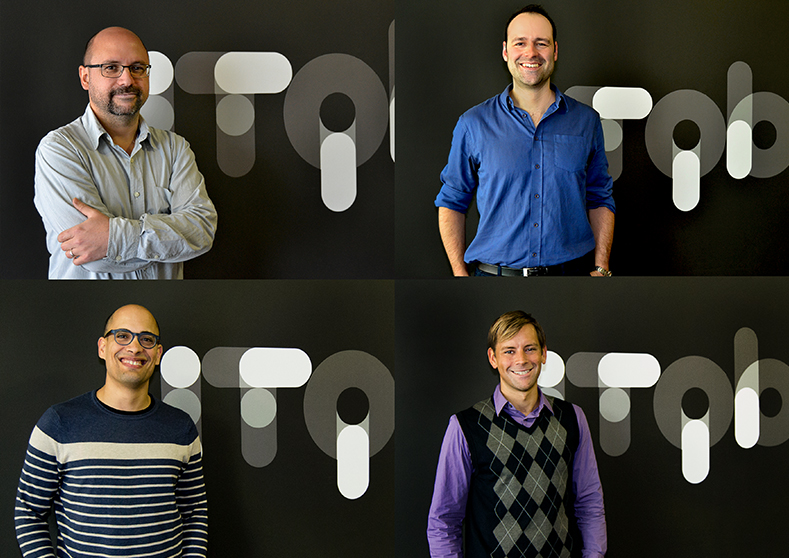[Seminar] Presentation of new ITQB NOVA laboratories
| When |
10 Jan, 2017
from
09:30 am to 12:00 pm |
|---|---|
| Where | Auditorium |
| Add event to your calendar |
|
Presentation of the new MOSTMICRO/ITQB NOVA laboratories
9h30 Welcome session by ITQB NOVA Dean, Cláudio M. Soares
9h45 Multiscale Modeling Lab, Manuel N. Melo
Title: Bridging scales and bridging research
Abstract: Molecular Dynamics (MD) simulations hold the promise of unparalleled structural and dynamic detail. In practice, however, these techniques are limited by computational power, and their applicability often falls short of the size and time scales of biological interest. I will show how the use of coarse-grained (CG) MD methods allows the modeling of systems into scales that cannot be reached by conventional atomistic MD. Through the use of CG MD, a range of new applications becomes accessible to simulation, which translates into great potential for scientific collaboration.
10h15 Single Molecule Microbiology, Zach Hensel
The smallest microbial cells contain millions of biological macromolecules—many with hundreds or thousands of identical molecules per cell. However, the copy number of any one gene is typically 1 or 2, transcription factors are often found at low concentrations with very strong DNA binding, and mRNAs in prokaryotic cells often have short lifetimes and low copy numbers. These factors amongst others lead to important cellular processes being influenced by the dynamics of single biomolecules. I will describe experimental approaches to study DNA dynamics, transcription, translation, and protein diffusion/localization at the single-molecule level in living microbial cells. Single molecule fluorescence microscopy techniques are applied to studying DNA dynamics, acquiring time traces of protein and mRNA expression, and observing the diffusion of transcription factor proteins. I will detail ongoing projects as well as some future goals for the Single Molecule Microbiology lab.
11h00 Biomolecular Self-Organization Lab, Alvaro Crevenna
Title: Reconstructing cellular organization, one molecule at the time
Abstract: The cell's interior is a conglomerate of dynamic interactions between molecules. My interest is to understand how these interactions generate, in space and time, ordered and disordered supra-molecular entities. To gain an insight into the molecular mechanisms behind these processes, we reconstitute them in vitro using purified components. We visualize components, in real time and with single molecule resolution, to resolve heterogeneity, measure parameters and build physical models. As an example of these approaches, I will show how actin monomers assemble into filaments, how this assembly drives bacterial motion and how the reversible oligomerization of Cab45 sorts soluble proteins at the Golgi Network. Then, I will discuss potential applications of this reconstitution approach and of the single molecule fluorescence methods to study systems level behavior of signaling cascades and architecture of protein complexes in bacteria, respectively.
11h30 Dynamic Structural Biology Lab, Tiago Cordeiro
Title: Mechanisms of Pathogenic Scaffold Proteins hijacking host cell signaling
Abstract: Bacterial pathogens have developed an intricate network of molecular interactions with their host to rewire host-signaling pathways and down-regulate its immune response. In this regard, bacterial effectors (virulence factors/toxins) are injected into the host where they target various cellular processes, often by mimicking the activity of host proteins. My future plans will be focused on the study of an emerging class of bacterial effectors of Enterohemorrhagic E. coli (EHEC), which modulate and hijack host cell networks using intrinsic disorder, linear motif mimicry and multivalency. Employing high- (NMR/X-ray) and low-resolution (SAXS) techniques, the lab will intend to provide a framework for: (1) an understanding of the molecular mechanisms of bacterial pathogenicity, (2) the design of novel anti-infective strategies, and (3) tools for interrogating cell signaling.

Top: Alvaro Crevenna, Manuel N. Melo. Bottom: Tiago Cordeiro and Zach Hensel







